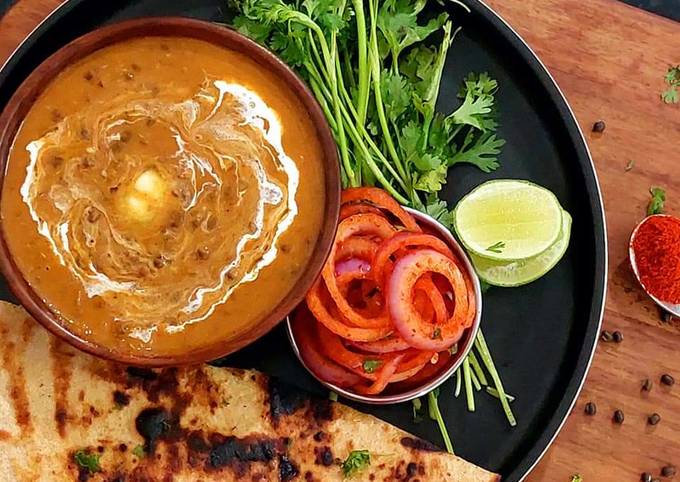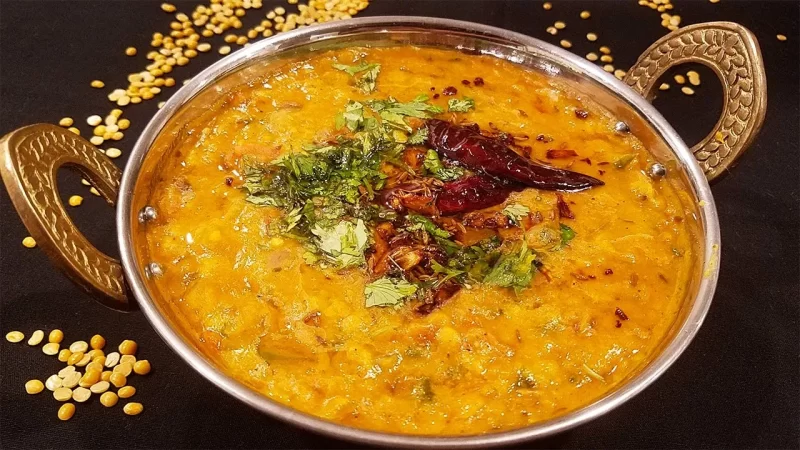Elevate Your Taste Buds with the
Best Dal Makhani Recipe
Dal Makhani recipe: If you’re a connoisseur of authentic Punjabi cuisine, then this Dal Makhani recipe is your gateway to a culinary delight. This restaurant-style version boasts subtle smoky flavors and the creamy goodness of lentils, making it a standout dish in North Indian Punjabi cuisine.
A Symphony of Ingredients
Whole Spices: Fragrant Magic
In the pursuit of perfection, I experimented extensively with dal makhani. Whole spices, like black cardamom and clove, proved to be the missing link. Their aromatic dance elevates the flavor, creating a dish that transcends expectations.
Cream and Butter: The Culinary Alchemy
Cream and butter play a pivotal role in crafting the richness of Dal Makhani. Through careful experimentation, I discovered that the right balance, though not copious, can transform this dish into a gastronomic masterpiece. Slow cooking further enhances its sumptuous texture.

Slow Cooking: Patience Rewarded
The essence of Dal Makhani recipe lies in its unhurried preparation. Authenticity thrives in the slow-cooking process, reminiscent of the traditional tandoor method. While most households lack a tandoor, a pressure cooker becomes the hero, delivering a finger-licking final result after a patient simmer.
Smoky Flavors: The Signature Touch
The smoky aroma, synonymous with restaurant-style dal makhani, can be achieved effortlessly. Explore two foolproof methods:
- Charcoal Infused Smoke (Dhungar): A delightful technique that mimics the restaurant experience. Optional, but highly recommended for that authentic touch.
- Smoked Paprika: A simple substitution for red chili powder adds a smoky twist, especially useful when charcoal isn’t accessible.
Dal Makhani recipe:
How to make Dal Makhani
Soaking Lentils: The Foundation of Flavor
- Begin your culinary adventure by soaking ¾ cup whole urad dal (whole black gram) and ¼ cup rajma (kidney beans) overnight in ample water. Drain them thoroughly, ensuring they are plump and ready for the cooking symphony.
- Give the urad lentils and rajma legumes a quick rinse in cool water.
- Drain and transfer them to a 3-litre pressure cooker. Add 3 cups of water and stir the potential goodness within.
- Pressure cook for 18 to 20 whistles on high flame until both urad dal and rajma achieve a tender, melt-in-the-mouth consistency. Ensure thorough cooking, adding water if needed for additional pressure cooking.
- The cooked urad dal and rajma should be a testament to your patience, with a texture so soft it melts on your tongue.
- In a blender, puree 2 large tomatoes (200 grams). No need to blanch; simplicity is the key.

Unveiling the Magic:
Making Dal Makhani
In a pan, heat 3 tablespoons of butter, whether salted or unsalted.
- Introduce a medley of whole spices—½ tsp cumin seeds, 2 to 3 cloves, 2 to 3 green cardamoms, 1 black cardamom, 1 inch cinnamon, and 1 small to medium tej patta (Indian bay leaf). Let them sputter and release their aromatic dance.
- Add ½ cup finely chopped onions and sauté them on low flame until they achieve a golden hue.
- Stir in 2 teaspoons of ginger-garlic paste until the raw aroma fades away.
- Inject a teaspoon of chopped green chilies and stir for an extra kick.
- Pour in the smooth tomato puree you prepared earlier.
- Mix in ½ teaspoon red chili powder and 2 to 3 pinches of grated nutmeg. Saute until fat releases from the sides, taking about 3 to 4 minutes on medium-low heat.
- Add the cooked urad dal and rajma beans along with the remaining stock. Achieve the desired consistency with 1 cup of water or more.
- Simmer the dal uncovered on low heat, stirring frequently to avoid any sticky situations.
- As the dal thickens, season it with salt and continue to simmer on low heat. Adjust the water if needed.
- After an overall simmering time of 25 minutes, introduce ¼ to ⅓ cup low-fat cream or half and half. If using heavy cream, two tablespoons will suffice.
- Stir the cream well, then switch off the heat.
- Sprinkle ¼ teaspoon kasuri methi (dried fenugreek leaves) for that final aromatic touch.

Optional Magic:
Charcoal Smoking (Dhungar Method)
Heat a small piece of charcoal until it turns red. Place it in a small bowl and pour ½ to ⅔ teaspoon of oil. The smoking journey begins.
- Position the smoking bowl on top of the dal and cover with a lid. Let the dal absorb the smoky essence for a minute.
- Stir again. Serve your Punjabi dal makhani garnished with coriander leaves and a dollop of cream. Pair it with naan, tandoori roti, paratha, kulcha, phulka, aloo paratha, or steamed rice.

Expert Tips for Culinary Excellence
Soaking Lentils:
- Soaking overnight reduces indigestion-causing phytic acid.
- Rinse soaked beans before cooking to further reduce phytic acid.
- Cooking time decreases by 25% when lentils are soaked.
Freshness of Lentils:
- Use fresh beans for that melt-in-the-mouth texture.
- Older beans take longer to cook and may not achieve the desired tenderness.
Tomatoes:
- Opt for sweet and ripe tomatoes for a balanced flavor.
- Canned tomatoes or store-bought tomato puree can be convenient alternatives.
Dhungar Method:
- Skip if charcoal is unavailable.
- Substitute smoked paprika for a faint smoky flavor.
Frequently Asked Questions
Why are whole spices essential for Dal Makhani?
Whole spices contribute a distinct aroma and flavor, enhancing the overall experience.
Can I reduce the amount of butter and cream?
Yes, a lighter version is possible. Ensure extended slow cooking for the authentic texture.
Why is slow cooking crucial?
Slow cooking transforms lentils, making them creamy and irresistible.
What’s the significance of smoky flavors?
Smokiness adds a restaurant-style touch; use charcoal or smoked paprika for the desired effect.
Can I prepare Dal Makhani in an Instant Pot?
Absolutely! The Instant Pot method is detailed in the FAQ section below.
Conclusion:
A Culinary Masterpiece Unveiled
In conclusion, Dal Makhani recipe transcends its humble ingredients to become a culinary masterpiece. The marriage of whole spices, cream, and slow cooking creates a symphony of flavors that will leave your taste buds yearning for more.


